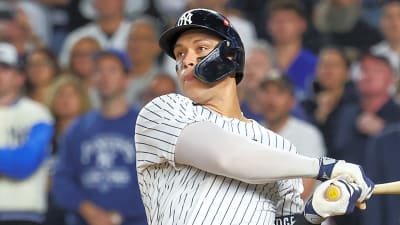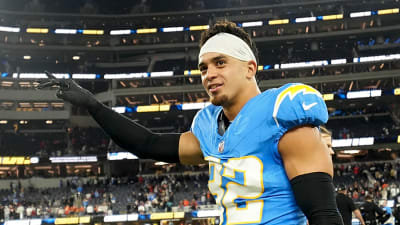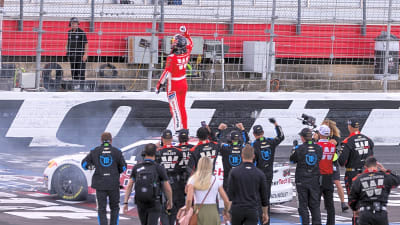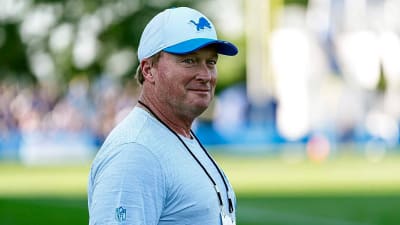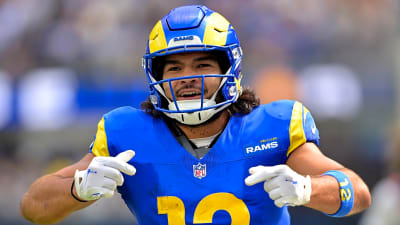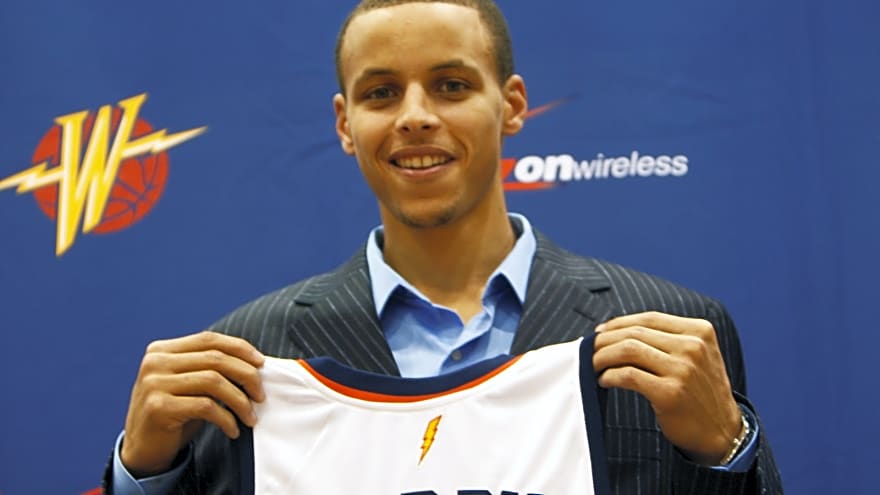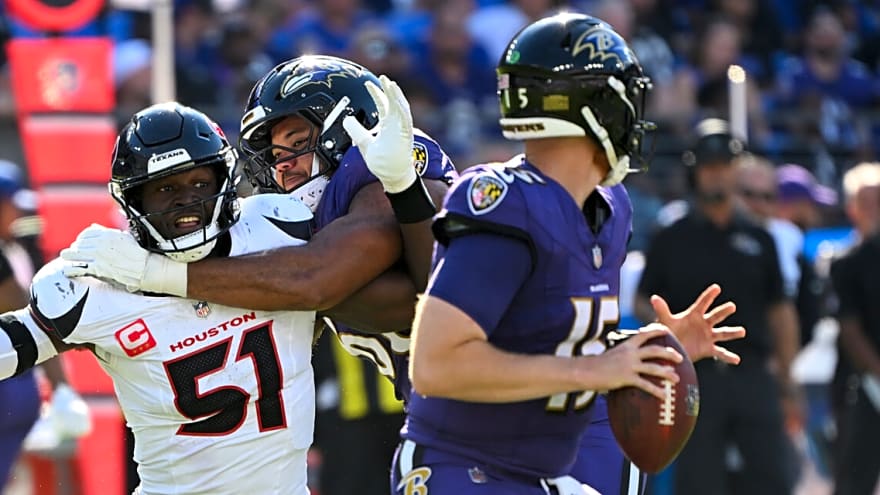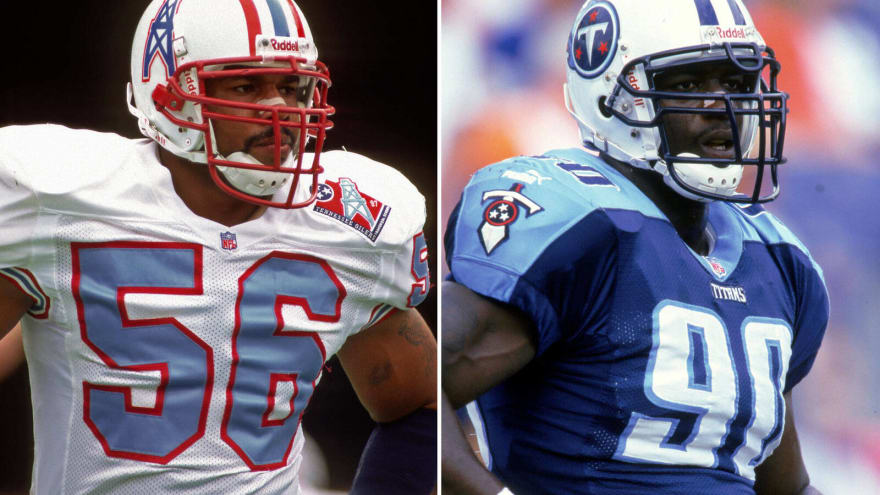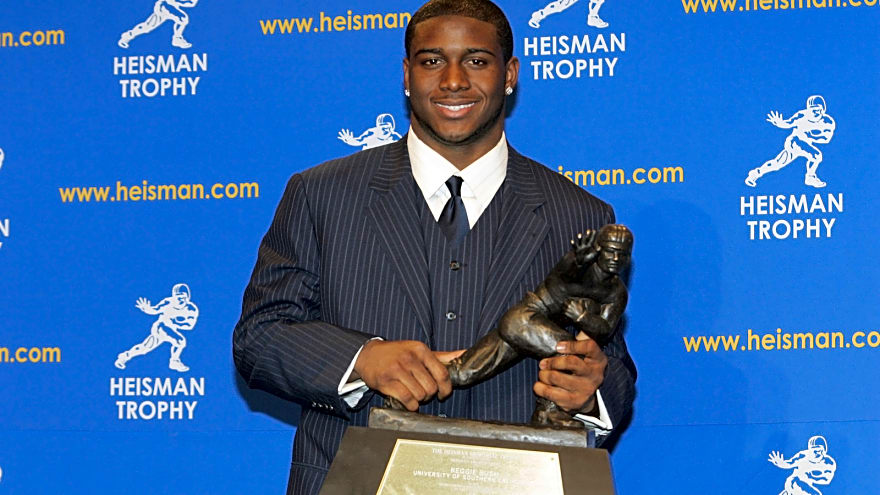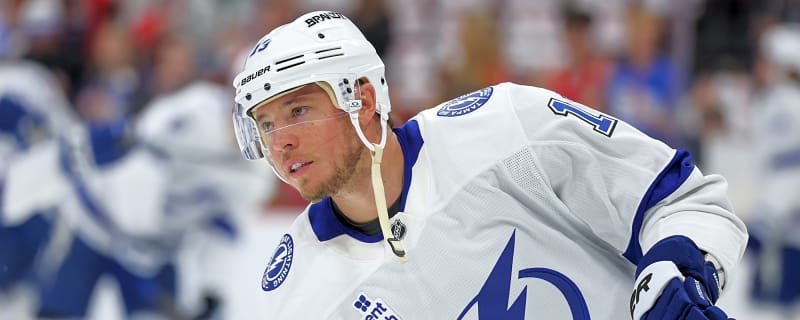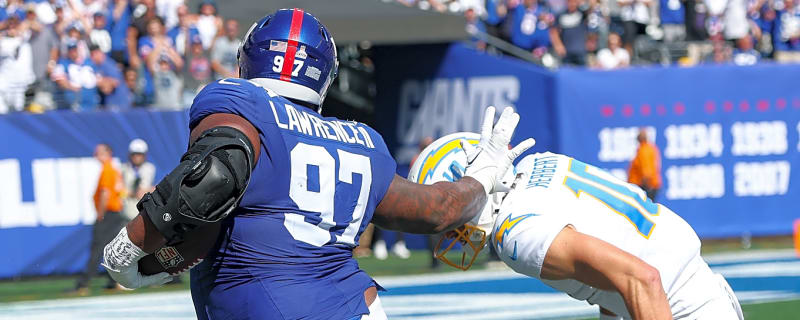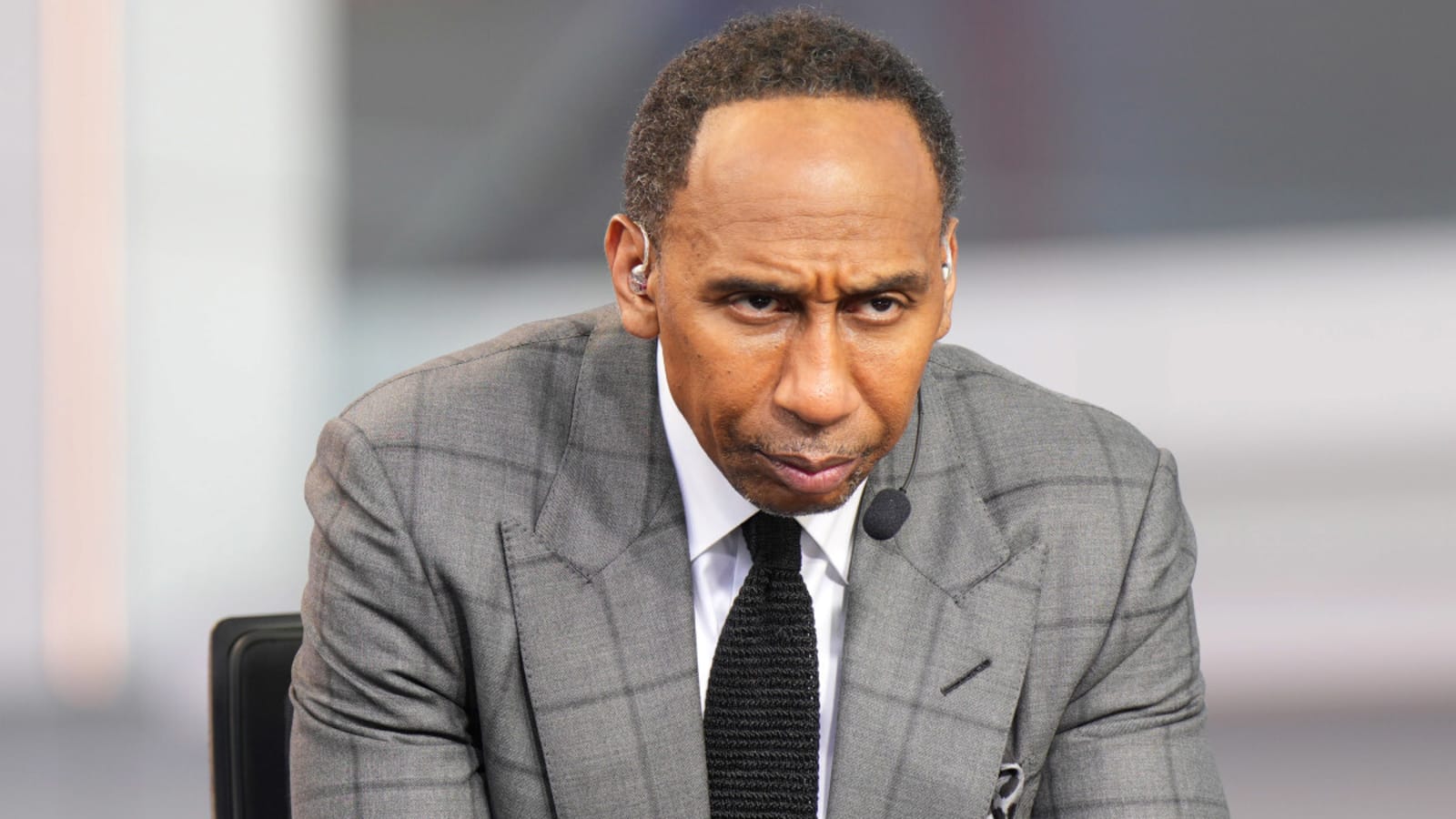
Stephen A. Smith has high expectations for Michael Jordan's new media assignment.
NBC announced last month that Jordan will join the network's returning NBA coverage as a "special contributor." The former Chicago Bulls legend may not replicate Smith's affinity for hot takes, but the ESPN personality doesn't think Jordan will hold back.
During last week's PBD Podcast, via Front Office Sports, Smith insisted that Jordan will be a straight-shooter as an analyst.
"Let me tell you something about Michael Jordan: He's going to be brutally honest. Oh, I can assure you that," Smith said. "He's not going to be somebody who's going to be passive. … The Michael Jordan I know, when talking basketball, he is as candid as it gets. He ain't trying to hurt nobody's feelings. He ain't trying to be insulting, but he's going to tell you what's going on."
Smith is "proud" of Jordan for taking on the new challenge despite obviously not needing the money. Having fielded many calls from MJ about his First Take commentary, Smith felt it was about time Jordan offered his own basketball insight to the masses.
"Stop acting like you have nothing to say about basketball now that you're retired," Smith told Jordan. "You talk about it all the damn time!"
If Jordan doesn't meet those standards, Smith is prepared to hold the 62-year-old accountable and urge him to be more authentic on TV.
"I don't think he's going to be shy about saying what he sees, at all," Smith concluded. "As a matter of fact, if he is, he's going to have to deal with me because I'm going to be in his ear telling him, 'You're getting shy now. That's what we're doing? That ain't the MJ I know!'"
Smith's expectations may not align with Jordan's new role. Last month, CNBC's Alex Sherman reported that the six-time NBA champion is expected to appear in taped segments during NBC's pre-game and halftime shows.
Front Office Sports also said a rumor that NBC is paying Jordan $40 million annually is "inaccurate."
More must-reads:
- Insider suggests Giannis Antetokounmpo's days in Milwaukee 'numbered'
- Do NBA players secretly admire Kawhi Leonard's alleged side hustle?
- The 'Most NFL QB two-rushing-TD games' quiz
Breaking News
Trending News
TODAY'S BEST

Lakers star LeBron James' lame stunt hoodwinks ticket buyers
Los Angeles Lakers forward LeBron James teased a retirement announcement was coming Tuesday, which drove up ticket prices for what would have been his final game. Turns out, King James was just selling cognac. Monday, James put up a post teasing "The decision of all decisions," referencing his controversial TV special from 2010 when he announced on ESPN that he was leaving the Cleveland Cavaliers for the Miami Heat. The move did raise money for the Boys Girls Club, but breaking the hearts of Cavs fans on live television didn't help James' image. This time, James didn't make any earth-shattering announcements. The only people he disappointed were people who bought overpriced tickets for a Utah Jazz-Los Angeles Lakers game, and fans who didn't expect an NBA legend to do a crass publicity stunt to advertise Hennessy. Hinting at retirement created a ticket price spike With James about to start his 23rd NBA season and playing on a one-year contract, no one knows how long he plans to play. That's why "#TheSecondDecision" naturally led people to assume he'd be announcing his retirement. That's why ticket prices soared for the Lakers' final home game on April 12. The cheapest seats went from $82 to $580 in a day. Three hours after the announcement turned out to be a Hennessy ad, the cheapest seats have dropped to $233 on VividSeats. It's not James' responsibility to protect ticket scalpers, of course, but people who bought tickets thinking it was his final game might be sorely disappointed. Facing the tanking Jazz, there's an excellent chance James won't even play. The stunt may reflect James' unhappiness with the Lakers James surely got richly rewarded for the ad, though the rollout was botched when Hennessy released the ad 90 minutes ahead of the promised 12 p.m. EST announcement. But it says something about the star's frayed relationship with his team, which traded for and extended Luka Doncic this year while only giving James a one-year deal, that he would tease fans about quitting for a liquor promotion. Perhaps this is a subtle signal to the team from a player who has regularly used social media to deliver passive-aggressive messages. If Doncic is the new face of the franchise, then James no longer needs to give the Lakers a heads-up about his long-term plans. Especially when the Hennessy ad came the same day James was ruled out for the entire preseason. The Lakers will be fine, and James wasn't likely to play much before the season started anyway. The only real losers are the ticket speculators, who will have to hope Ace Bailey and Walker Kessler can make the Jazz exciting to watch — though probably not worth a $500 ticket.

Cowboys Dealt Unfortunate News Before Panthers Game
Dak Prescott and the Dallas Cowboys played arguably their best game of the 2025 NFL season under first-year head coach Brian Schottenheimer, taking down Justin Fields and the New York Jets 37-22 in Week 5. Now, the Cowboys will look for a second straight win in Week 6, facing Bryce Young and the Carolina Panthers in Charlotte. Against the Jets, Prescott had his best performance of 2025 as well, throwing for 237 yards and four touchdowns. What made it more impressive is that he did it without four of his starting offensive linemen and All-Pro wide receiver CeeDee Lamb. The defense was missing a few key pieces as well, with linebacker DeMarvion Overshow still recovering from a 2024 injury and safety Malik Hooker dealing with a toe issue. But in Week 5, Dallas injury problems continued to grow as starting safety Donovan Wilson suffered an undisclosed injury against New York, while linebacker Jack Sanborn, also a starter, left the same game early with a concussion. And the injuries were severe enough to force both players to miss practice on Wednesday. Along with Wilson and Sanborn, running back Miles Sanders, who didn't play against the Jets, was able to participate in practice, but he was forced to leave early. "Did not see Donovan Wilson, KaVontae Turpin or Jack Sanborn at the media’s viewing of practice today," wrote Cowboys staff writer Tommy Yarrish. "Miles Sanders was out there for some of the media’s viewing period, but went back to the locker room early." Despite a 2-2-1 record, the Cowboys have fielded one of the NFL’s weakest defenses this season, allowing a league-worst 412.0 yards per game, and they certainly can’t afford to lose any more players. However, the Prescott-led offense has helped offset those struggles, averaging a league-best 406.6 yards per game. Still, Wilson and Sanborn have proven to be valuable members of Schottenheimer’s defense, ranking among the Cowboys’ top three tacklers through five games. As of Wednesday, their status for the Panthers matchup remains unclear.

Dolphins’ Mike McDaniel Issues Serious Warning to Tua Tagovailoa
Mike McDaniel’s Dolphins are stuck in a rut, and the pressure is mounting fast. After messing up a 17-0 lead last Sunday, the team sits at 1-4, its worst start since 2021. The defense looks shaky, and Tua Tagovailoa’s performance has become an overanalyzed topic in Miami. The team’s future and McDaniel’s job security now hang in the balance as the clock ticks toward their Week 6 showdown with the Los Angeles Chargers. And the head coach didn’t sugarcoat things during his media session ahead of the game. When asked how quarterback Tua has absorbed the high expectations amidst growing frustration, McDaniel was blunt. “A bottom line, black and white, you’re held accountable for the results while you’re trying to get better, that’s difficult.” He knows Tua faces constant noise, from praise to criticism, and how a player handles that separates the winners from the rest. “It’s not easy, but that’s something that no quarterback in the National Football League is not exposed to…They tell you you’re awesome or that you suck. What is that? How does that relate to what you’re doing to influence your next performance?” That’s as close to a warning from a head coach as you get without flat out saying ‘shape up or ship out.’ McDaniel is emphasizing accountability to a player who’s been under the microscope since Day 1. Tagovailoa, who threw three touchdowns on Sunday but watched his team collapse after a strong start, knows the sting of losing better than most. “No one wants to start the season 1-4…We’ve got to figure this out now. This feeling sucks,” Tua admitted. The Dolphins’ offense sputtered after their early lead, rushing for a mere 19 yards, their lowest since McDaniel took over in 2022. The defense gave up 239 rushing yards, with rookie Rico Dowdle running for a career high of 206 yards. This loss was a wake-up call. Miami’s meltdown was the first time under McDaniel that the Dolphins lost after holding a 17-point lead. And with a turnover differential advantage, no less. McDaniel called the loss “unacceptable,” taking full responsibility and promising immediate fixes. Despite that, the head coach’s job security remains in question. Mike McDaniel is on the hot seat The pressure on McDaniel isn’t just coming from the scoreboard. ESPN’s Jeremy Fowler put it plainly on The Rich Eisen Show: “(McDaniel’s seat) is moderately hot.” Ownership likes the guy, but patience is wearing thin. “This is not something where they are looking for an excuse to move on from him right now,” Fowler said. “They want to give him a little bit of time…[But] if they have some home games that are pretty ugly, if the fans turn on the team. That’s when Stephen Ross could make a move.” That’s a polite way of saying the Dolphins’ season is hanging by a thread. The team’s defense, retooled and weaker than before, hasn’t gelled. Key players on that side were let go for locker room culture reasons, but their replacements haven’t measured up. It’s a rebuilding year with a thin margin for error. Fowler points out Miami’s transition, saying “they’re not working with a team that is ready-made to win right now, at least on that side of the ball.” With just two home games in October and intense fan scrutiny looming, McDaniel’s future depends heavily on fixing what’s broken now. The Dolphins will have to find their identity fast. And McDaniel will need to prove he’s the right man to lead them through these rough waters.

Steelers' Aggressive Trade Plans Get Revealed For 2025 And Beyond
The Pittsburgh Steelers currently have total control of the AFC North, and they can strengthen their iron grip on the division with a Week 6 win against the Cleveland Browns. There are additionally plenty of options for the team to trade for in an attempt to increase their chances of making a deep playoff run. However, they have also made it very clear that the plan is to acquire more draft picks to trade up for a possible franchise quarterback, and/or get more chances at finding quality players -- especially in the middle rounds. As the trade deadline approaches, they seem to be at a crossroads. During his weekly Q A chat, insider Gerry Dulac was recently asked about those plans and what General Manager Omar Khan would do before the trade deadline hits. He gave a very straightforward answer to the mindset of Khan and the front office at this point. "They are playing for now, not for 2026 or 2027," Dulac said. "They'll worry about those seasons then." Dulac was also asked a lot about tight end Pat Freiermuth, who fans have speculated could be on the move due to his lack of usage. Any question about him possibly being shipped out of town or maybe being in trouble with the team was answered with just one word: "Nope." From what Dulac has seen, it seems like there is no interest in trading away their starting tight end yet, or anyone else that could be seen as expendable. From that, it's safe to say that the Steelers will be looking for ways to improve the team for right now. Khan has said before that he is always looking for some way to make his squad better. Of course, they are still in the pick business, so the most logical expectation is that Pittsburgh will only make a trade if they don't have to give up a lot in assets, especially if they can keep said player for more than just 2025. Potential Trade Options For The Steelers The Steelers do love their versatile players, especially on defense. They do need help in the trenches, so they could take a quick flyer on someone like Sebastian Joseph-Day, who has been a defensive tackle, a defensive end, and even a nose tackle throughout his career. The starters on the interior defensive line have done well so far for Pittsburgh, but it's always good to have an insurance piece on the team in case something goes wrong. There is one perfect option for Khan and the Steelers offensively. Wide receiver Chris Olave checks all the boxes that Khan is likely looking for: cheap, efficient, could be extended, and an overall quality player. Just because the Steelers claim to be currently comfortable with their situation at wideout, doesn't mean that it won't hurt to possibly get a steal of a trade to help the short and long-term future. As of now, it seems like wide receiver and interior defensive line would be the Steelers' top priorities, but if another high-ceiling player somehow becomes available for a low price at most other positions, it would not be too surprising to see them make a move to bring them on. Khan has never been one to stand pat and stick with what he has in front of him. It seems like both Freiermuth and outside linebacker Alex Highsmith will stick around, even if people believe that they are expendable. Of course, they could always trade them away after the season is over to accrue more draft picks. It just likely won't happen during the 2025 campaign, as they want every quality player possible to finally break the streak of playoff futility.
Customize Your Newsletter
 +
+
Get the latest news and rumors, customized to your favorite sports and teams. Emailed daily. Always free!

